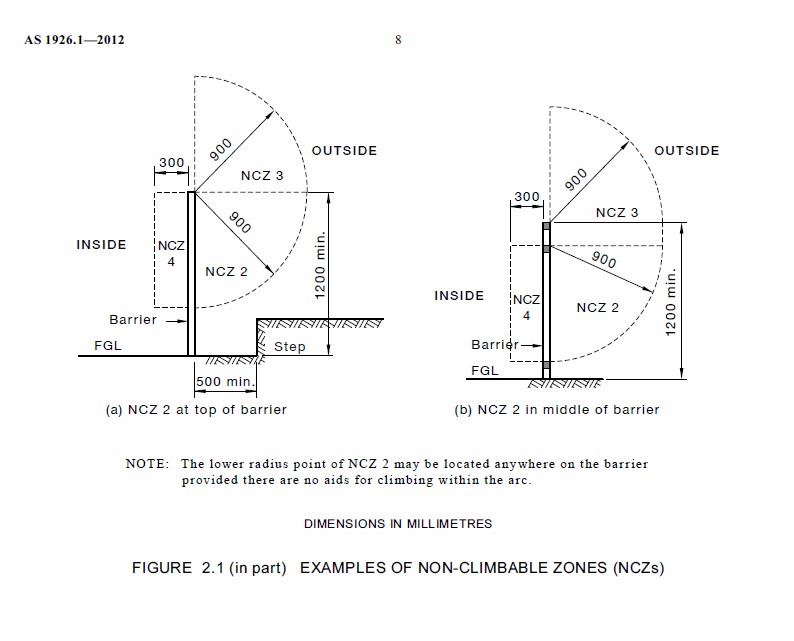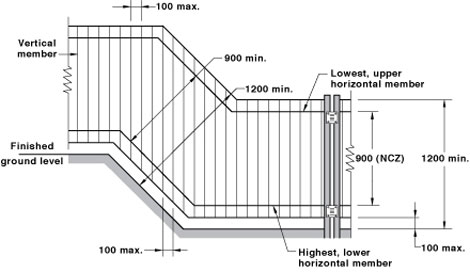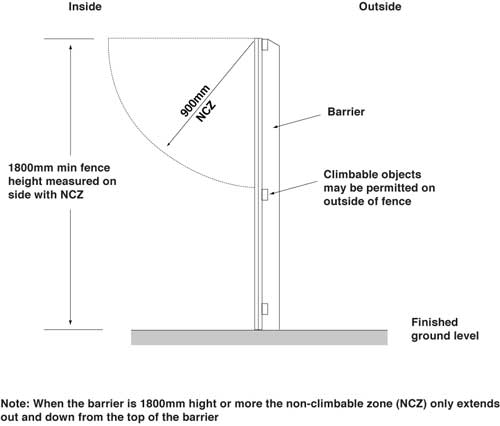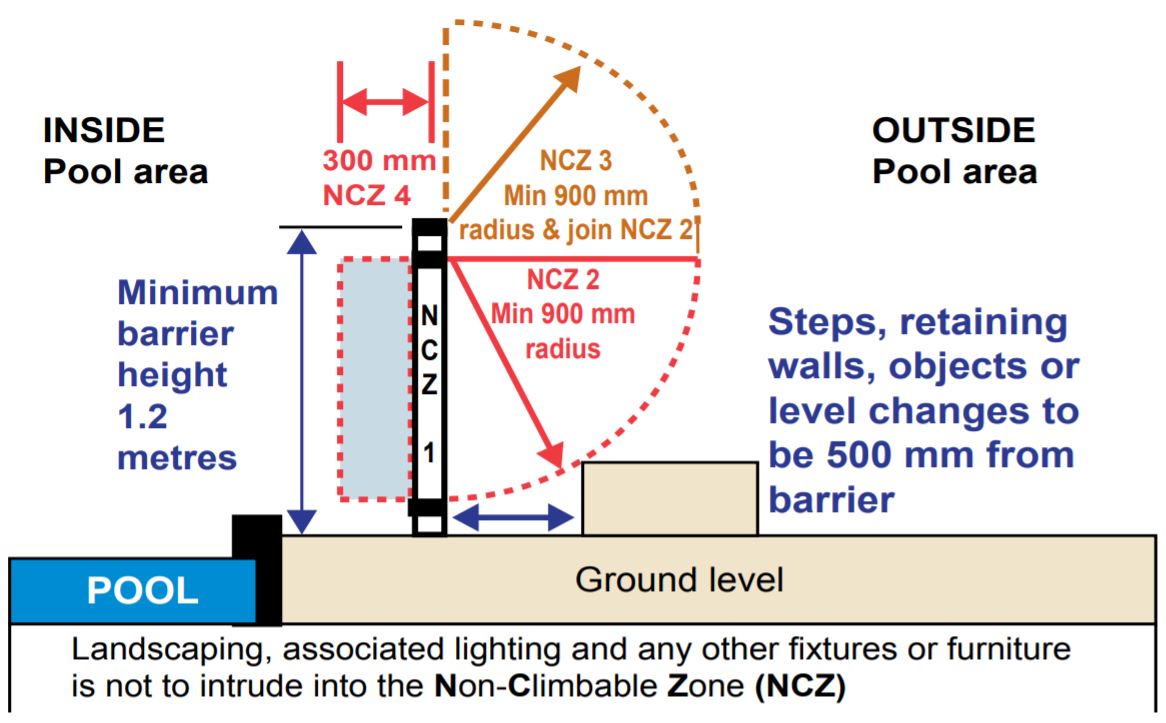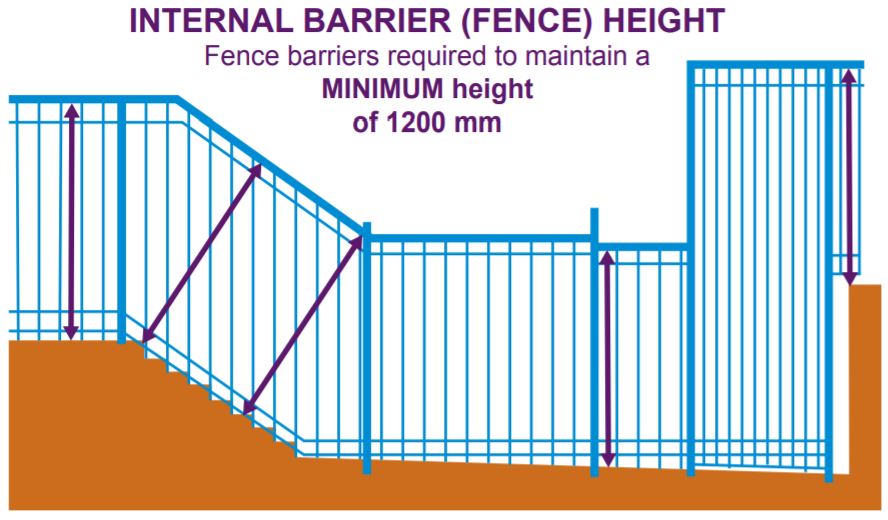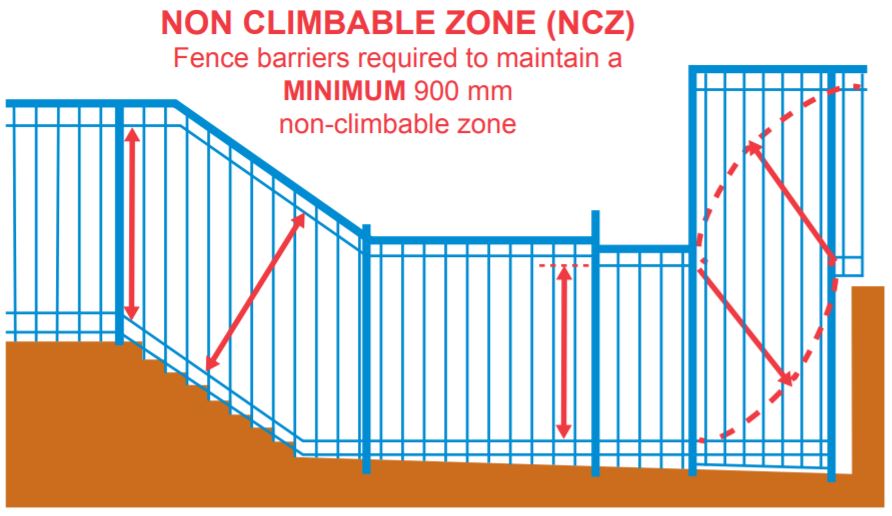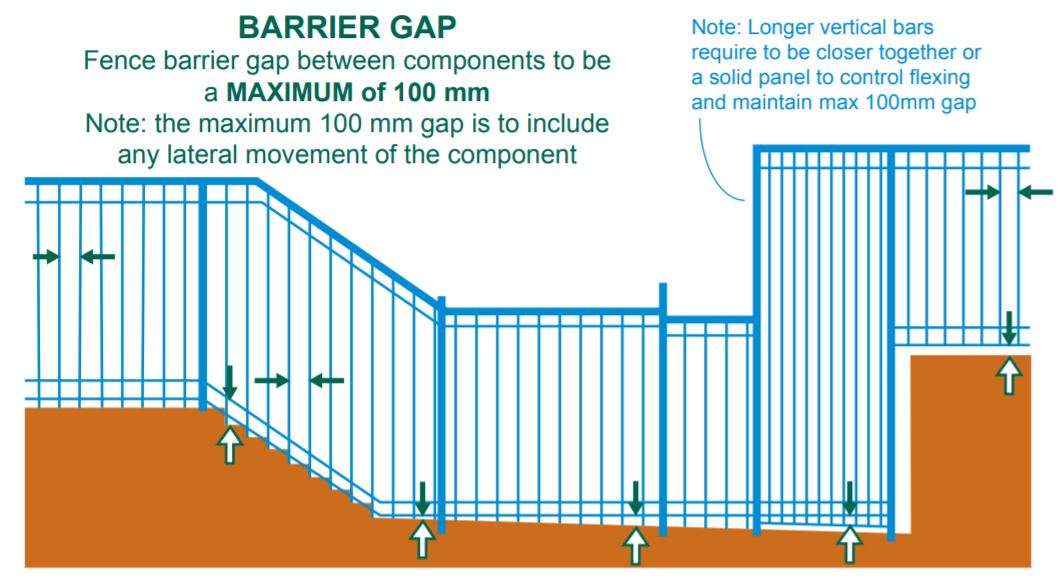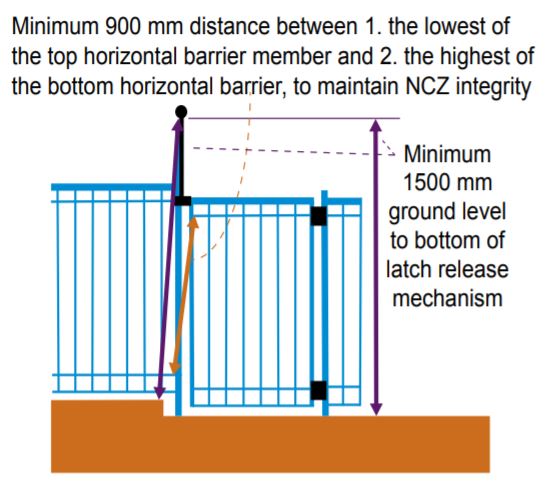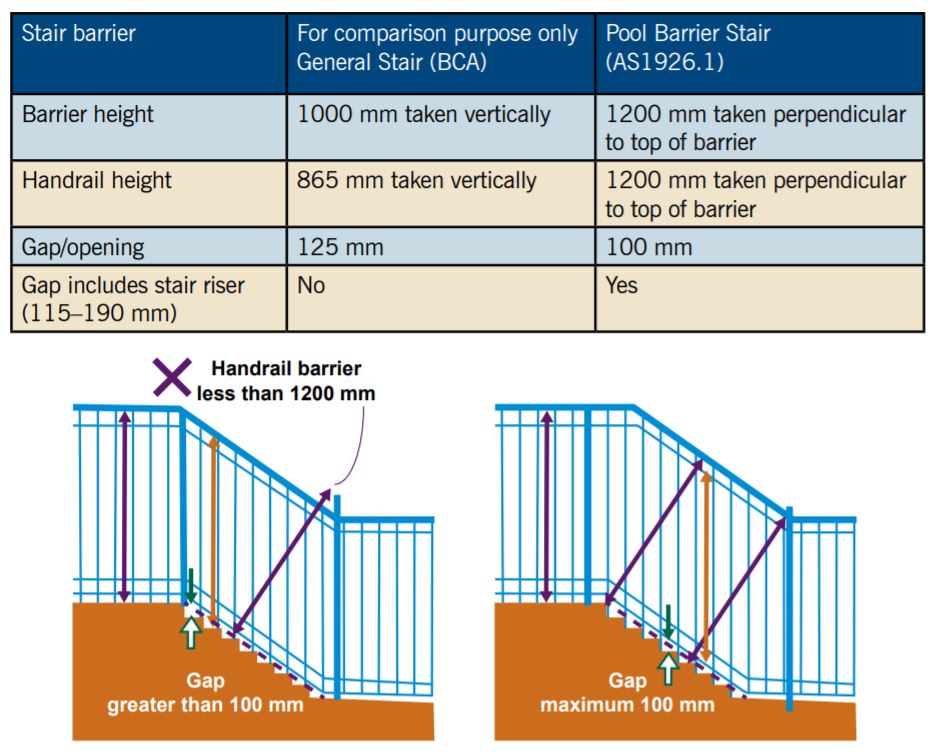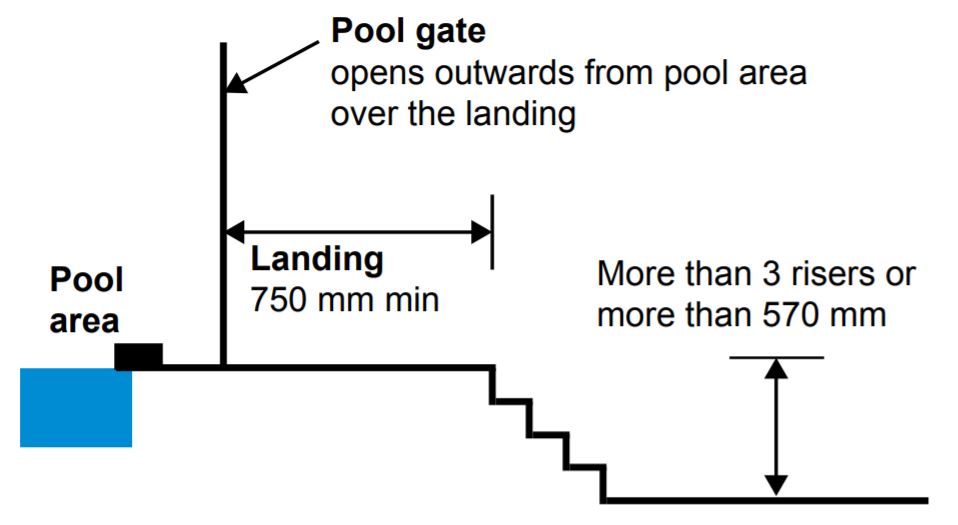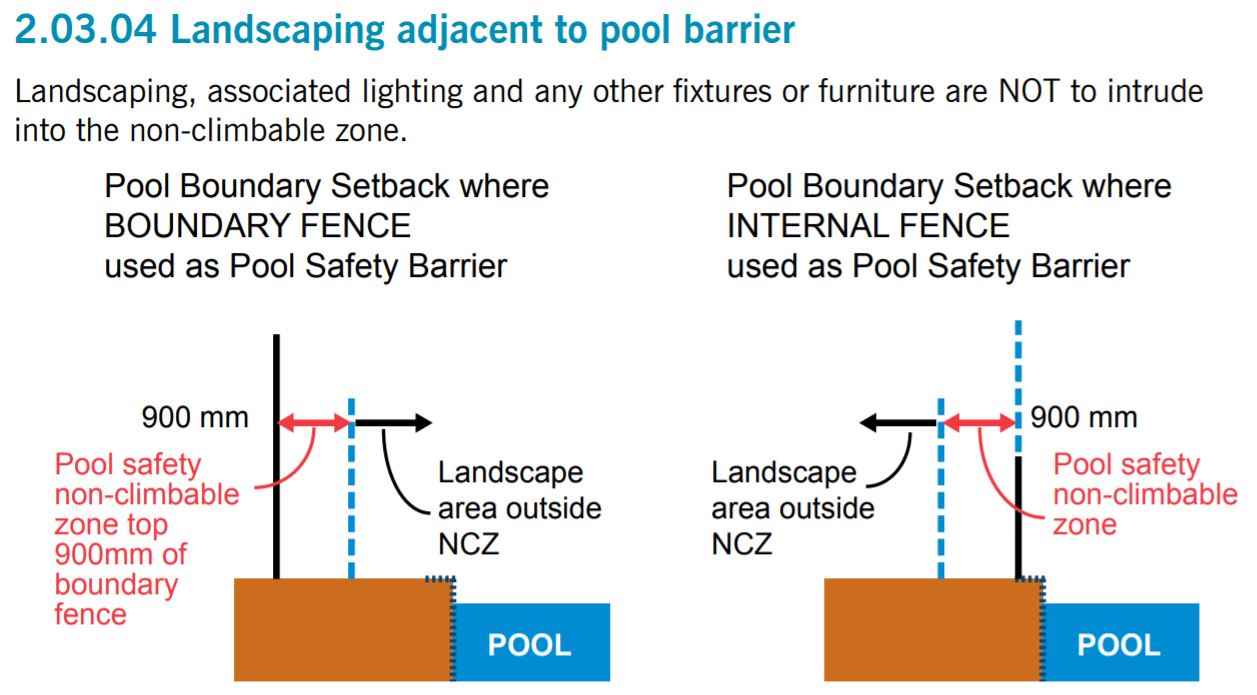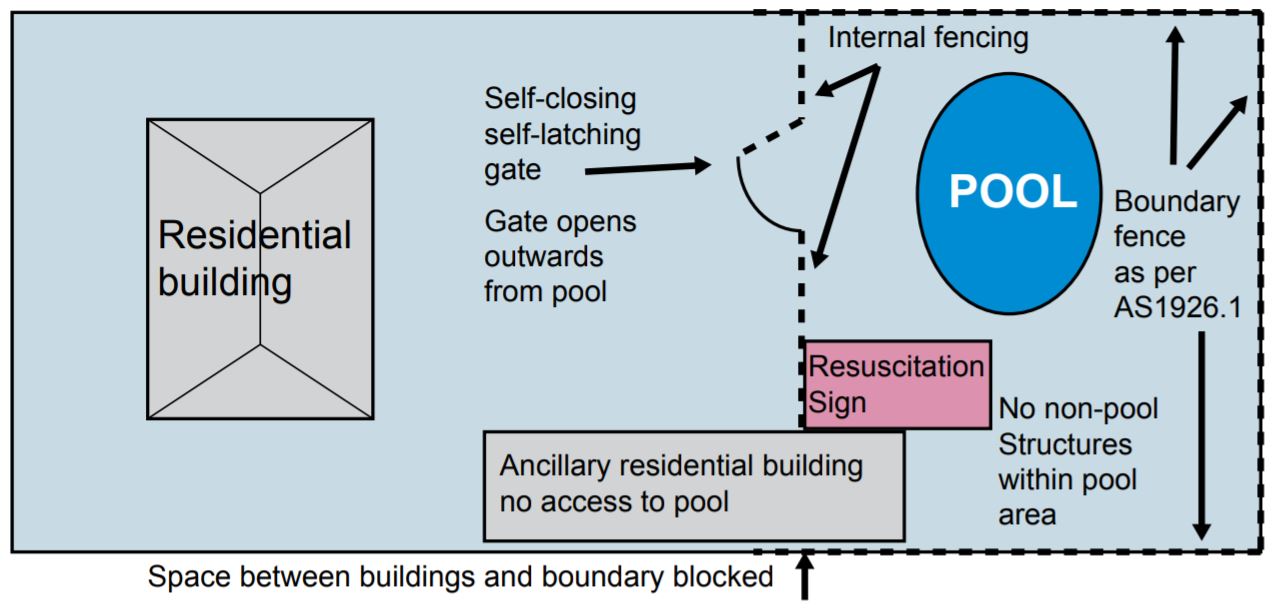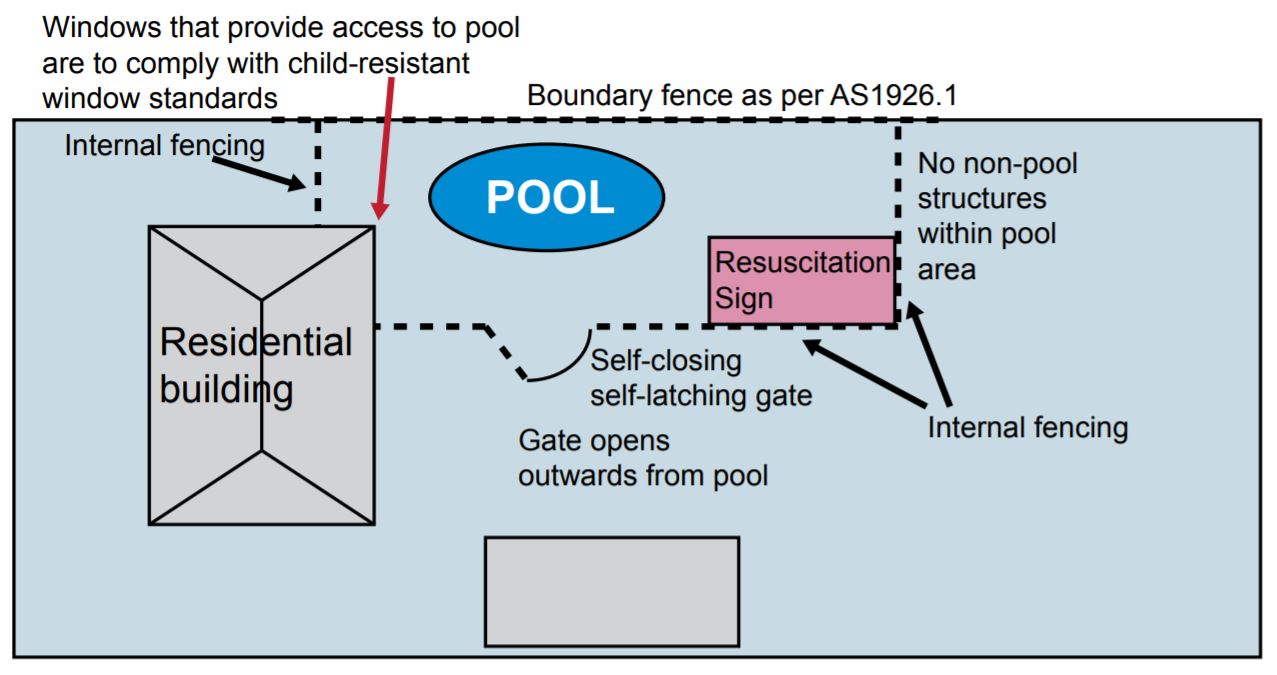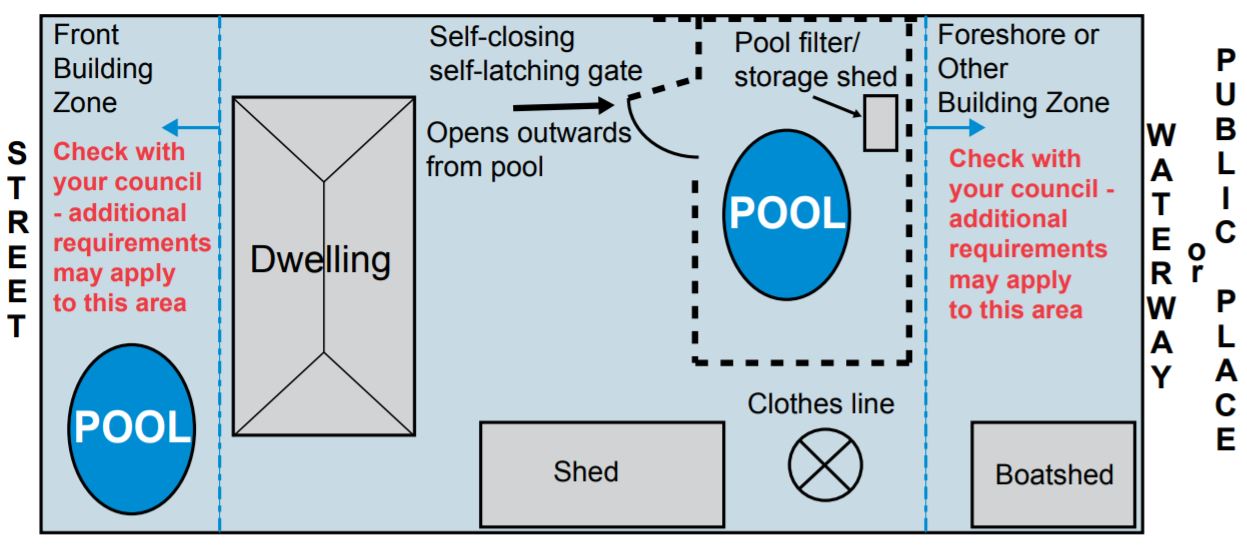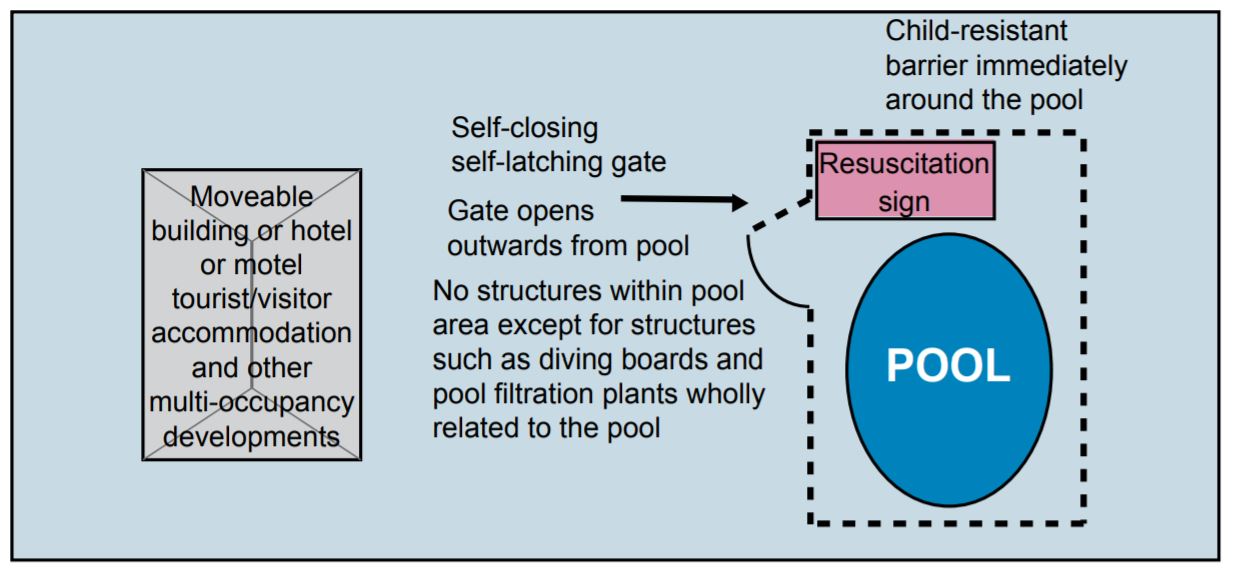NSW Pool Regulations
Pool Fences
• be at least 1.2m high (as measured from the finished ground level)
• not leave a gap at the bottom bigger than 10cm from the finished ground level
• if a boundary fence is part of the pool fence, the barrier must be 1.8m high
• not have gaps of more than 10cm between any vertical bars in the fence
• if containing horizontal climbable bars, have these spaced at least 90cm apart
• perforated or mesh barriers must have holes no greater than 13mm for fence heights of 1.2m
• perforated or mesh barriers of 1.8m height with holes greater than 13mm must not exceed 100mm
• The pool fence must be well maintained and in good working order
Non-Climbable Zone
To prevent children climbing over fencing into the pool area, the laws require pool owners to make sure they maintain a ‘non-climbable zone’ around the pool.
• any trees, shrubs or any other objects such as a barbeque, pot plants, toys, ladders and chairs must not be within the 90cm non climbable zone.
• this zone is measured in an arc shape from the top of the pool fence arching towards the ground.
• it also includes the space extending 30cm inside the pool area – this space should also be cleared of any potential footholds or handholds.
• any horizontal climbable bars on the pool fence must also be spaced AT LEAST 90cm apart.
Child-Resistant Doors and Windows
Older swimming pools might include doors or windows as part of the pool fence or barrier. This is no longer allowed.
Doors in Pool Barriers
If you have a door that forms part of a pool barrier you must make sure that:
• it self closes without the application of manual force
• it self latches and requires manual release
• the latching device is at least 150cm off the ground
• it has a non climbable zone of 90cm that is at least 120cm above the floor
• it does not open towards the pool
• it does not have any pet doors.
Windows in Pool Barriers
If you have windows that form part of a pool barrier, they must have:
• a locking device or a security screen fixed to the building that prevents them from opening more than 10cm.
• If it does not satisfy this requirement, you will need to install a locking device or security screen that reduces the gap to 10cm or less.
Gate Closing and Latching Devices
Check to ensure that your pool gate:
• is never propped open and is always kept shut
• swings outwards (away from the pool area). If it does not swing outwards, the gate must be re-hung so that it does.
• shuts automatically from any open position, without having to forcibly close it.
• automatically locks (self-latches) when it closes.
• If the gate does not shut and lock automatically, the pool gate should be permanently fastened until a new lock and closing device can be installed. Self-closing and self-latching devices can be purchased from most pool and hardware shops and can be easily installed.
Signage
Appropriate and clear warning signs must be attached to the pool fence and gate
In case of an emergency the law requires that you have a cardiopulmonary resuscitation (CPR) sign displayed near your pool. The sign must be in good condition and able to be read easily from 3 metres.
Pool Fence and Gate Maintenance
All fence bolts, screws and fasteners must be tight and in good order. Any loose bolts, screws and fasteners should be tightened or replaced. Self-closing gate hinges, locks and latches should be sprayed with lubricating oil or silicone.
Manufacturers of the pool fence and gate should provide written instructions on how to maintain your pool fence and gate. This may include the regular replacement of springs and regular spraying of self-closing gate hinges, locks and latches with lubricating oil or silicone. Proper maintenance can help to prevent many of the faults relating to self-closing and self-latching gates.
